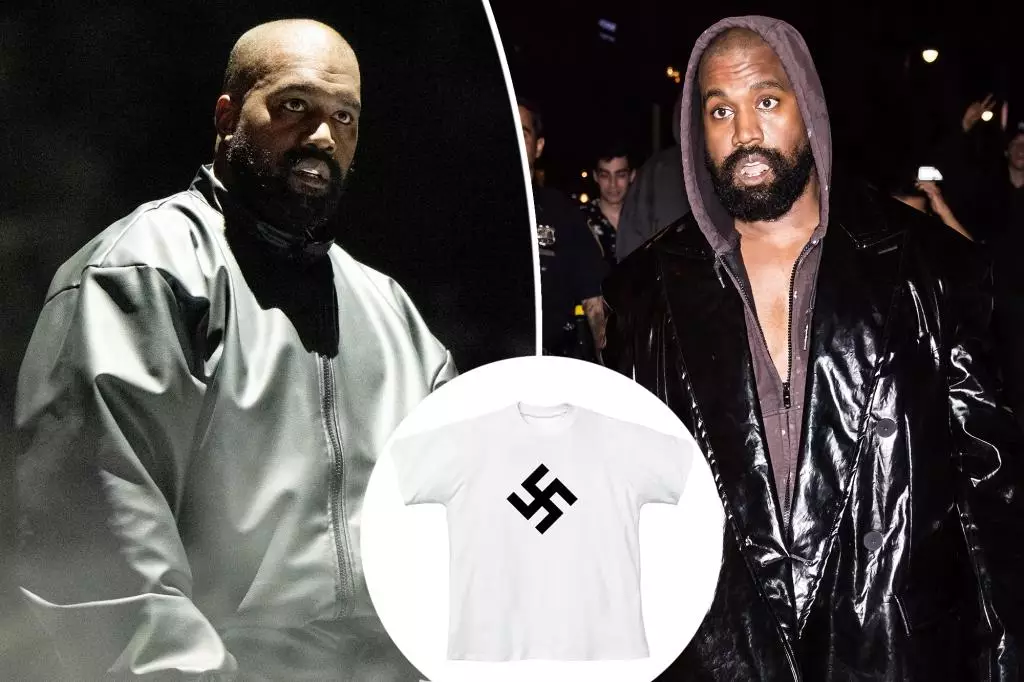Kanye West, now known as Ye, has made headlines for years for a multitude of reasons, but his recent Super Bowl advertisement has pushed the envelope further than many anticipated. Centered around a T-shirt emblazoned with a swastika, the ad raises important questions about the intersection of celebrity culture, the responsibility of public discourse, and the potential consequences of promoting hate.
During the recent Super Bowl, a highly-anticipated event watched by millions, Ye aired a commercial promoting his Yeezy website alongside the controversial “HH-01” T-shirt, which some interpret as a thinly-veiled endorsement of antisemitic sentiments. The choice to feature such imagery is alarming and begs the question: how far can an artist go in the name of expression without crossing ethical boundaries?
The ad was strategically placed in select markets–Los Angeles, Philadelphia, and Atlanta–where it could potentially spark both interest and outrage. The decision to go public with such an inflammatory product at a massive event like the Super Bowl seems calculated, as it engages viewers beyond the music realm and into the political and moral landscape.
The backlash from the Anti-Defamation League (ADL) was immediate and substantial. The ADL condemned the ad and its implications, highlighting the historical weight of the swastika as a symbol of hate and terror. Their statement emphasized not just the offensive nature of Ye’s product but the broader cultural implications of airing such an ad during one of the most-watched sporting events globally.
Ye has a history of controversial statements, some of which have verged on antisemitic, leading many to view this as yet another troubling instance of his ego’s unchecked influence. The ADL’s comments pointed to the troubling normalization of such rhetoric, especially when amplified through platforms with enormous reach. They assert that Ye’s actions exemplify a willingness to prioritize personal expression over communal responsibility.
In his own reflections before the ad aired, Ye described the T-shirt as his “greatest performance art piece.” This interpretation begs an exploration of what constitutes art and performance in today’s climate. Can an artist use hate speech as a medium for artistic expression? Or does that fundamentally undermine the value of art itself, which is traditionally viewed as a vessel for connection rather than division?
Despite public opinion and backlash, it is clear Ye holds a firm belief in his right to say and do as he pleases. Social media posts where he expressed admiration for Hitler and blatant denouncements of the Jewish community demonstrate a deliberate choice to provoke. This poses a perplexing dilemma: the celebration of free speech must be balanced with the recognition of its potential to cause real harm.
An equally pressing issue arising from this scenario is the role of media corporations and their responsibility in the face of such controversies. Fox’s approval of the advertisement without knowledge of the T-shirt’s design raises concerns about editorial discretion and the influence of celebrity on media decisions. This moment brings to light the ethical obligations of networks to consider the content they broadcast, especially when it can perpetuate dangerous ideologies.
As audiences consume media, the potential effects of glamorizing such ideologies cannot be understated. The ramifications extend beyond the individual artist and ripple throughout society, potentially affecting how hate and prejudice are perceived and tolerated.
The significance of this ad extends beyond Kanye West’s personal brand; it has implications for society at large. In a time when antisemitism, racism, and other forms of hate are on the rise, messaging through popular platforms needs to be scrutinized. The choice to mainstream such divisive symbols is troubling and serves as a call to action for both audiences and corporations to take responsibility for the narratives they endorse and share.
While Ye’s intent may be framed within the context of artistic freedom, the impact of his choices is palpable. As discussions around media responsibility, the limits of free speech, and the repercussions of hate continue to unfold, it is crucial for all areas of society, including artists, corporations, and individuals, to reflect on the messages they propagate. The Super Bowl ad is a stark reminder of the weight of words and symbols, and the responsibility we all share in challenging hatred in all its forms.

